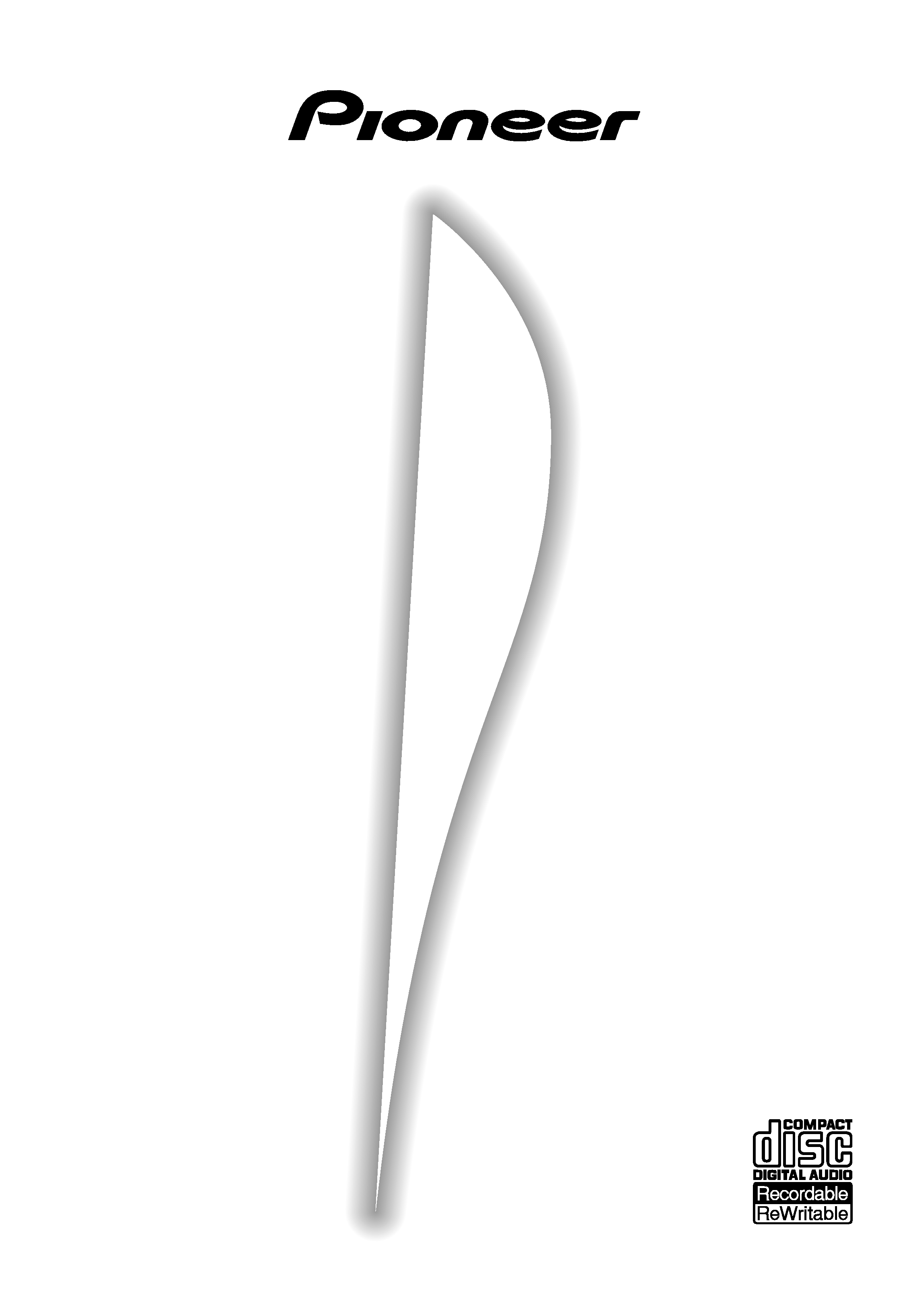
Operating Instructions
COMPACT DISC RECORDER
PDR-609
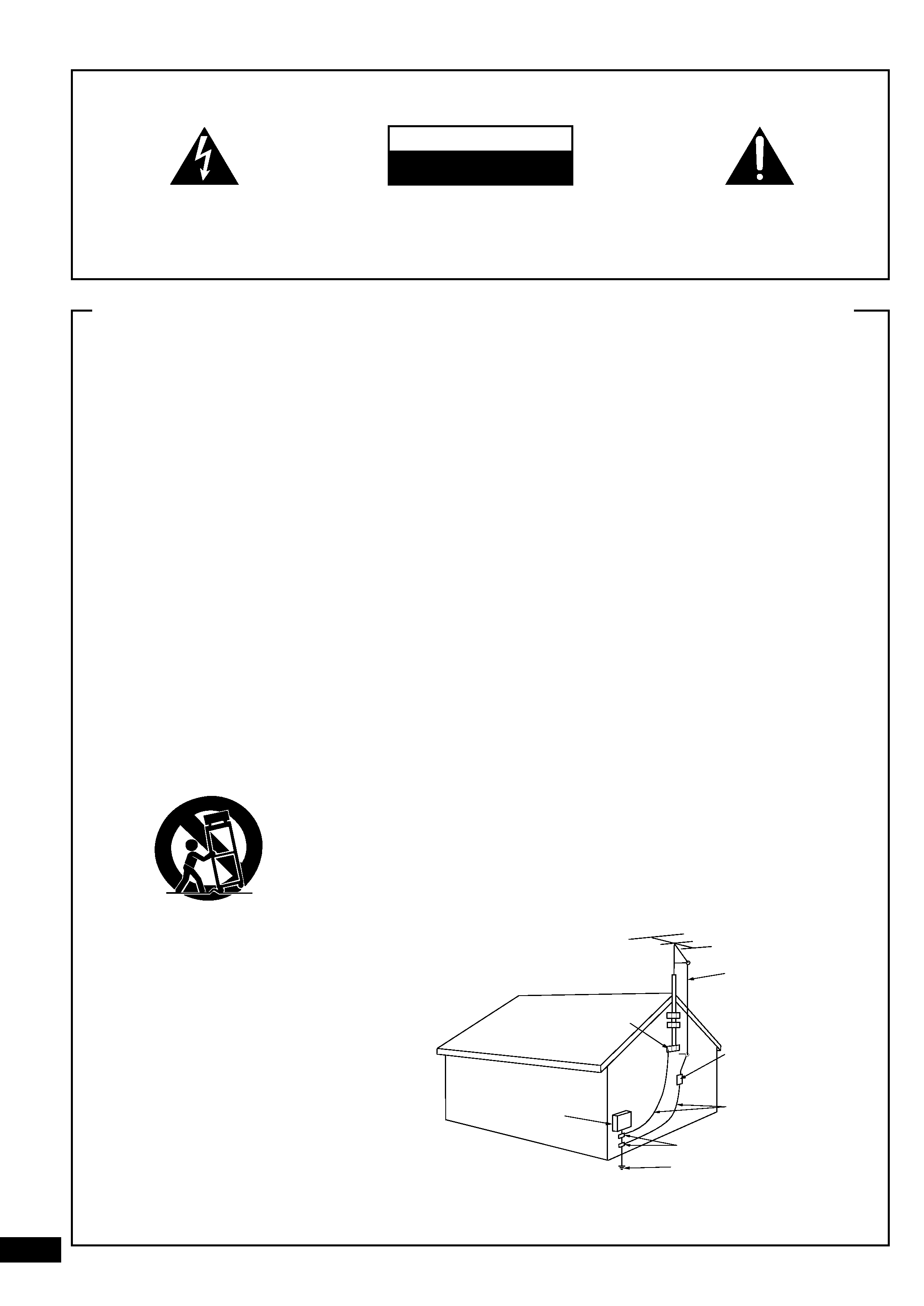
2
En
The exclamation point within an equilateral
triangle is intended to alert the user to the presence
of important operating and maintenance
(servicing) instructions in the literature
accompanying the appliance.
IMPORTANT
The lightning flash with arrowhead symbol, within
an equilateral triangle, is intended to alert the
user to the presence of uninsulated "dangerous
voltage" within the product's enclosure that may
be of sufficient magnitude to constitute a risk of
electric shock to persons.
CAUTION:
TO PREVENT THE RISK OF ELECTRIC SHOCK, DO
NOT REMOVE COVER (OR BACK). NO USER-SER-
VICEABLE PARTS INSIDE. REFER SERVICING TO
QUALIFIED SERVICE PERSONNEL.
RISK OF ELECTRIC SHOCK
DO NOT OPEN
CAUTION
READ INSTRUCTIONS -- All the safety and operating
instructions should be read before the product is
operated.
RETAIN INSTRUCTIONS -- The safety and operating
instructions should be retained for future reference.
HEED WARNINGS -- All warnings on the product and
in the operating instructions should be adhered to.
FOLLOW INSTRUCTIONS -- All operating and use
instructions should be followed.
CLEANING -- Unplug this product from the wall outlet
before cleaning. The product should be cleaned only
with a polishing cloth or a soft dry cloth. Never clean
with furniture wax, benzine, insecticides or other
volatile liquids since they may corrode the cabinet.
ATTACHMENTS -- Do not use attachments not
recommended by the product manufacturer as they
may cause hazards.
WATER AND MOISTURE -- Do not use this product
near water -- for example, near a bathtub, wash
bowl, kitchen sink, or laundry tub; in a wet basement;
or near a swimming pool; and the like.
ACCESSORIES -- Do not place this product on an
unstable cart, stand, tripod, bracket, or table. The
product may fall, causing serious injury to a child or
adult, and serious damage to the product. Use only
with a cart, stand, tripod, bracket, or table
recommended by the manufacturer, or sold with
the product. Any mounting of the product should
follow the manufacturer's instructions, and should
use a mounting accessory recommended by the
manufacturer.
CART -- A product and cart combination should be
moved with care. Quick stops, excessive force, and
uneven surfaces may cause the product and cart
combination to overturn.
GROUNDING OR POLARIZATION
¶ Ifthisproductisequippedwithapolarizedalternating
current line plug (a plug having one blade wider than
the other), it will fit into the outlet only one way. This
is a safety feature. If you are unable to insert the plug
fully into the outlet, try reversing the plug. If the plug
should still fail to fit, contact your electrician to
replace your obsolete outlet. Do not defeat the
safety purpose of the polarized plug.
¶ If this product is equipped with a three-wire
grounding type plug, a plug having a third (grounding)
pin, it will only fit into a grounding type power outlet.
This is a safety feature. If you are unable to insert the
plug into the outlet, contact your electrician to
replace your obsolete outlet. Do not defeat the
safety purpose of the grounding type plug.
POWER-CORD PROTECTION -- Power-supply cords
should be routed so that they are not likely to be
walked on or pinched by items placed upon or
against them, paying particular attention to cords at
plugs, convenience receptacles, and the point where
they exit from the product.
OUTDOOR ANTENNA GROUNDING -- If an outside
antenna or cable system is connected to the product,
be sure the antenna or cable system is grounded so
as to provide some protection against voltage surges
and built-up static charges. Article 810 of the National
Electrical Code, ANSI/NFPA 70, provides information
with regard to proper grounding of the mast and
supporting structure, grounding of the lead-in wire
to an antenna discharge unit, size of grounding
conductors, location of antenna-discharge unit,
connection to grounding electrodes, and
requirements for the grounding electrode.
See Figure A.
LIGHTNING -- For added protection for this product
during a lightning storm, or when it is left unattended
and unused for long periods of time, unplug it from
the wall outlet and disconnect the antenna or cable
system. This will prevent damage to the product
due to lightning and power-line surges.
POWER LINES -- An outside antenna system should
not be located in the vicinity of overhead power lines
or other electric light or power circuits, or where it
can fall into such power lines or circuits. When
installing an outside antenna system, extreme care
should be taken to keep from touching such power
lines or circuits as contact with them might be fatal.
OVERLOADING -- Do not overload wall outlets,
extension cords, or integral convenience receptacles
as this can result in a risk of fire or electric shock.
OBJECT AND LIQUID ENTRY -- Never push objects of
any kind into this product through openings as they
may touch dangerous voltage points or short-out
parts that could result in a fire or electric shock.
Never spill liquid of any kind on the product.
SERVICING -- Do not attempt to service this product
yourself as opening or removing covers may expose
you to dangerous voltage or other hazards. Refer all
servicing to qualified service personnel.
DAMAGE REQUIRING SERVICE -- Unplug this product
from the wall outlet and refer servicing to qualified
service personnel under the following conditions:
¶ When the power-supply cord or plug is damaged.
¶ If liquid has been spilled, or objects have fallen into
the product.
¶ If the product has been exposed to rain or water.
¶ If the product does not operate normally by following
the operating instructions. Adjust only those controls
that are covered by the operating instructions as an
improper adjustment of other controls may result in
damage and will often require extensive work by a
qualified technician to restore the product to its
normal operation.
¶ If the product has been dropped or damaged in any
way.
¶ When the product exhibits a distinct change in
performance -- this indicates a need for service.
REPLACEMENT PARTS -- When replacement parts
are required, be sure the service technician has used
replacement parts specified by the manufacturer or
have the same characteristics as the original part.
Unauthorized substitutions may result in fire, electric
shock, or other hazards.
SAFETY CHECK -- Upon completion of any service or
repairs to this product, ask the service technician to
perform safety checks to determine that the product
is in proper operating condition.
WALL OR CEILING MOUNTING -- The product should
not be mounted to a wall or ceiling.
HEAT -- The product should be situated away from heat
sources such as radiators, heat registers, stoves, or
other products (including amplifiers) that produce
heat.
IMPORTANT SAFETY INSTRUCTIONS
GROUND
CLAMP
ANTENNA
DISCHARGE UNIT
(NEC SECTION 810-20)
GROUNDING CONDUCTORS
(NEC SECTION 810-21)
GROUND CLAMPS
POWER SERVICE GROUNDING
ELECTRODE SYSTEM
(NEC ART 250, PART H)
ELECTRIC
SERVICE
EQUIPMENT
Fig. A
ANTENNA
LEAD IN
WIRE
NEC -- NATIONAL ELECTRICAL CODE
VENTILATION -- Slots and openings in the cabinet are
provided for ventilation and to ensure reliable
operation of the product and to protect it from
overheating, and these openings must not be
blocked or covered. The openings should never be
blocked by placing the product on a bed, sofa, rug,
or other similar surface. This product should not be
placed in a built-in installation such as a bookcase or
rack unless proper ventilation is provided or the
manufacturer's instructions have been adhered to.
POWER SOURCES -- This product should be operated
only from the type of power source indicated on the
marking label. If you are not sure of the type of
power supply to your home, consult your product
dealer or local power company.
LOCATION The appliance should be installed in a
stable location.
NONUSE PERIODS The power cord of the appliance
should be unplugged from the outlet when left un-
used for a long period of time.
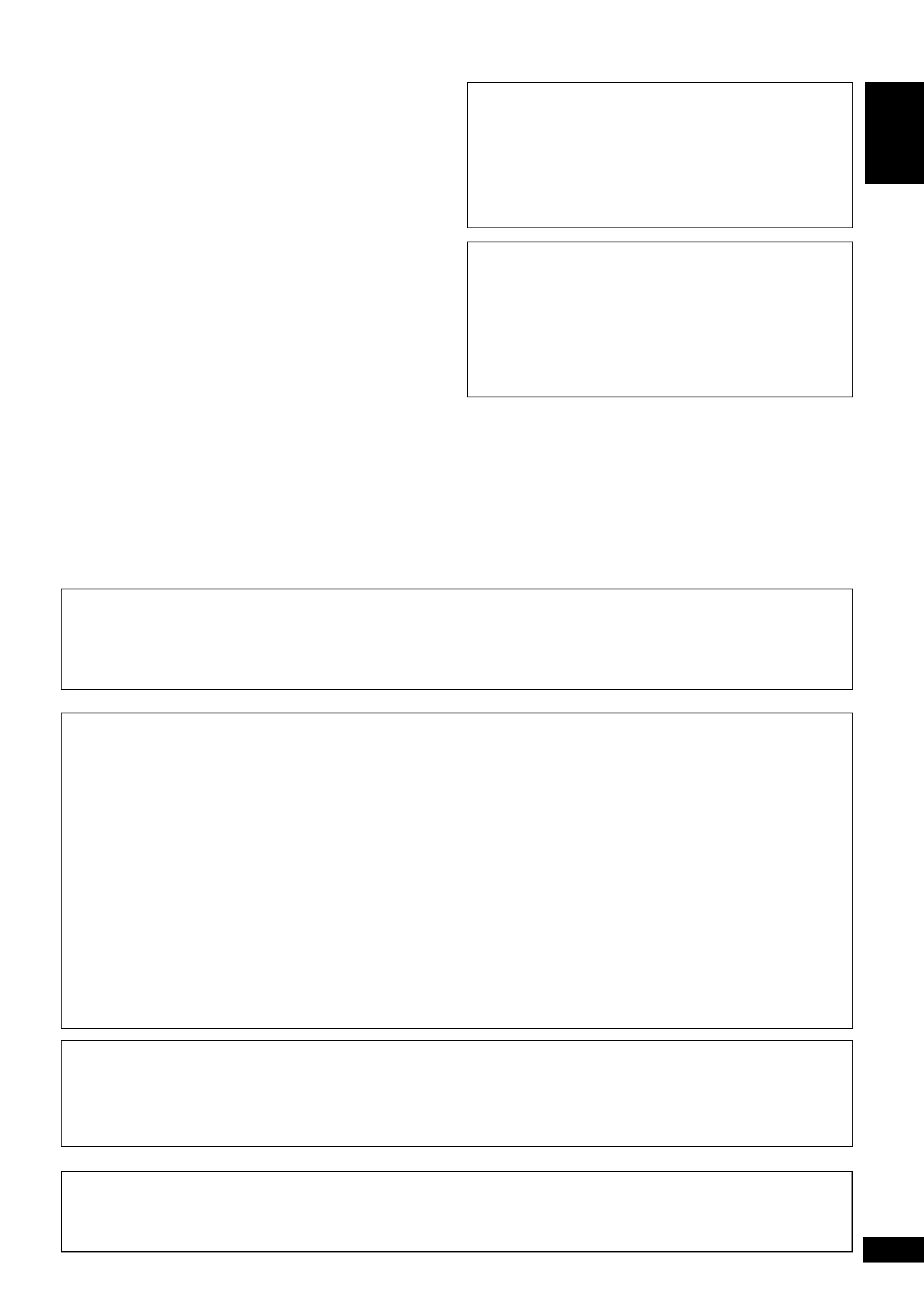
3
English
En
[For Canadian model]
This Class B digital apparatus complies with
Canadian ICES-003.
[Pour le modèle Canadien]
Cet appareil numérique de la classe B est
conforme à la norme NMB-003 du Canada.
CAUTION:
¶ Use of controls or adjustments or performance of procedures other than those specified herein hazardous radiation
exposure.
¶ The use of optical instruments with this product will increase eye hazard.
NOTE: This equipment has been tested and found to comply with the limits for a Class B digital
device, pursuant to Part 15 of the FCC Rules. These limits are designed to provide reasonable pro-
tection against harmful interference in a residential installation. This equipment generates, uses,
and can radiate radio frequency energy and, if not installed and used in accordance with the instruc-
tions, may cause harmful interference to radio communications. However, there is no guarantee
that interference will not occur in a particular installation. If this equipment does cause harmful
interference to radio or television reception, which can be determined by turning the equipment off
and on, the user is encouraged to try to correct the interference by one or more of the following
measures:
Reorient or relocate the receiving antenna.
Increase the separation between the equipment and receiver.
Connect the equipment into an outlet on a circuit different from that to which the receiver is
connected.
Consult the dealer or an experienced radio/TV technician for help.
CAUTION:
This product satisfies FCC regulations when shielded cables and connectors are used to connect the
unit to other equipment. To prevent electromagnetic interference with electric appliances such as ra-
dios and televisions, use shielded cables and connectors for connections.
WARNING: TO PREVENT FIRE OR SHOCK
HAZARD, DO NOT EXPOSE THIS APPLIANCE TO RAIN
OR MOISTURE.
[For U.S. model]
IMPORTANT NOTICE
The serial number for this equipment is located in the
rear. Please write this serial number on your enclosed
warranty card and keep it in a secure area. This is for
your security.
Information to User
Alteration or modifications carried out without appropriate authorization may invalidate the user's right to operate
the equipment.
[For U.S. model]
DANGER LASER RADIATION WHEN
OPEN.
AVOID DIRECT EXPOSURE TO BEAM.
This caution can be found on the rear panel of
the unit.
[For Canadian model]
CAUTION: TO PREVENT ELECTRIC SHOCK DO NOT
USE THIS (POLARIZED) PLUG WITH AN EXTENSION
CORD, RECEPTACLE OR OTHER OUTLET UNLESS THE
BLADES CAN BE FULLY INSERTED TO PREVENT BLADE
EXPOSURE
ATTENTION: POUR PREVENIR LES CHOCS
ELECTRIQUES NE PAS UTILISER CETTE FICHE POLARISEE
AVEC UN PROLONGATEUR, UNE PRISE DE COURANT OU
UNE AUTRE SORTIE DE COURANT, SAUF SI LES LAMES
PEUVENT ETRE INSERESS A FOND SANS EN LAISSER
AUCUNE PARTIE A DECOUVERT.
Thank you for buying this Pioneer product.
Please read through these operating instructions so you will
know how to operate your model properly. After you have
finished reading the instructions, put them away in a safe
place for future reference.
In some countries or regions, the shape of the power plug
and power outlet may sometimes differ from that shown in
the explanatory drawings. However, the method of con-
necting and operating the unit is the same.
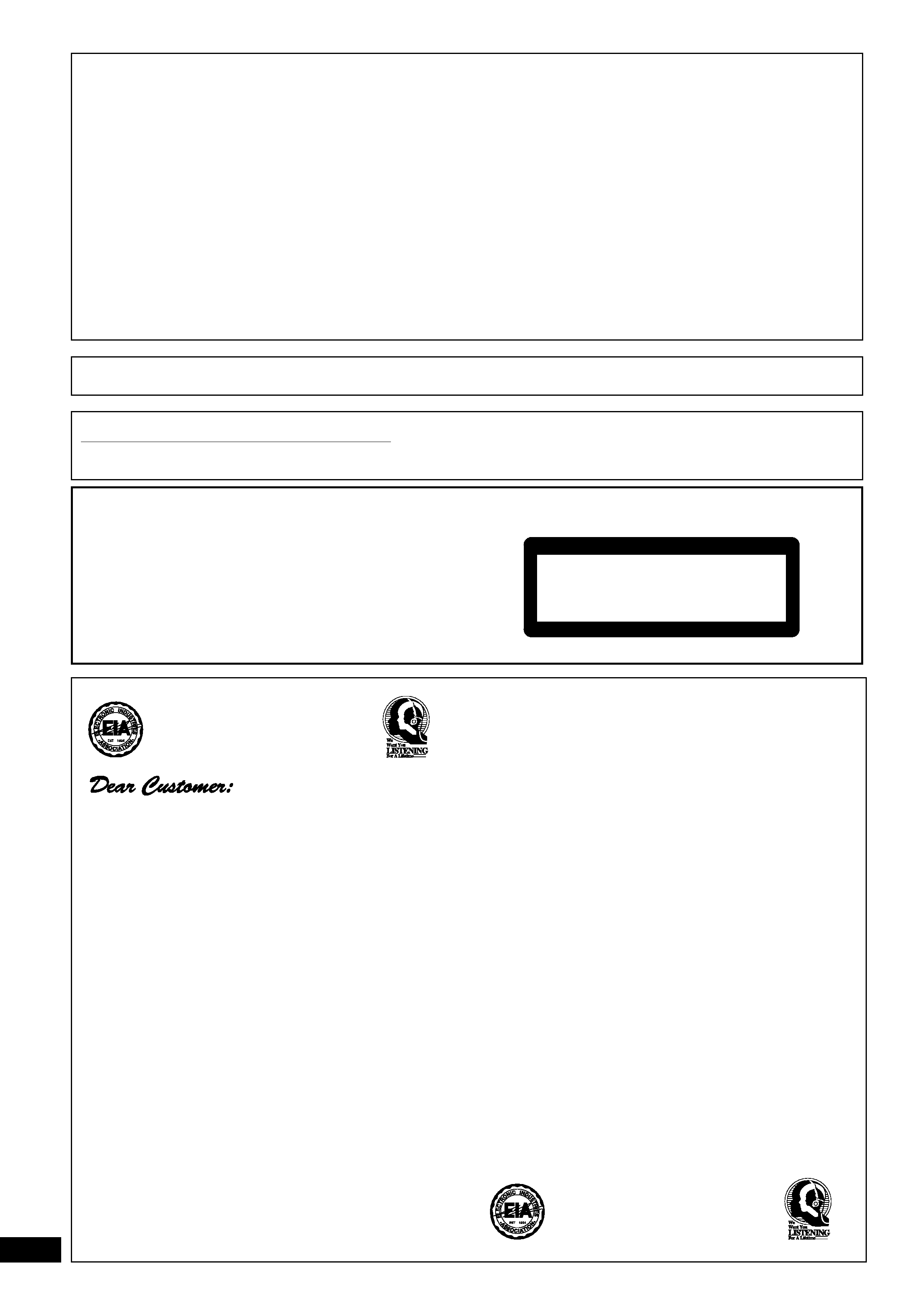
4
En
IMPORTANT
FOR USE IN THE
UNITED KINGDOM
The wires in this mains lead are
coloured in accordance with the
following code:
Blue :
Neutral
Brown :Live
If the plug provided is unsuitable
for your socket outlets, the plug
must be cut off and a suitable
plug fitted.
The cutoff plug should be
disposed of and must not be
inserted into any 13 amp socket
as this can result in electric
shock. The plug or adaptor of the
distribution panel should be
provided with a 5 amp fuse. As
the colours of the wires in the
mains lead of this appliance may
not correspond with coloured
markings identifying the
terminals in your plug, proceed
as follows:
The wire which is coloured blue
must be connected to the
terminal which is marked with
the letter N or coloured black.
The wire which is coloured brown
must be connected to the terminal
which is marked with the letter L or
coloured red.
Do not connect either wire to the
earth terminal of a three-pin plug.
NOTE
After replacing or changing a fuse,
the fuse cover in the plug must be
replaced with a fuse cover which
corresponds to the colour of the
insert in the base of the plug or the
word that is embossed on the base
of the plug, and the appliance must
not be used without a fuse cover. If
lost, replacement fuse covers can
INFRINGEMENT OF COPYRIGHT [For U.K. model]
Recording and playback of copyrighted material may require consent. See the Copyright Design and Patent Act 1988.
CAUTION
This product contains a laser diode of higher class
than 1. To ensure continued safety, do not remove
any covers or attempt to gain access to the inside
of the product.
Refer all servicing to qualified personnel.
The following caution label appears on your unit.
Location: Rear of the unit.
CLASS 1
LASER PRODUCT
This product complies with the Low Voltage Directive (73/23/EEC, amended by 93/68/ EEC), EMC Directives (89/
336/EEC, 92/31/EEC and 93/68/EEC).
Selecting fine audio equipment such as the unit you've just
purchased is only the start of your musical enjoyment. Now it's time
to consider how you can maximize the fun and excitement your
equipment offers. This manufacturer and the Electronic Industries
Association's Consumer Electronics Group want you to get the most
out of your equipment by playing it at a safe level. One that lets the
sound come through loud and clear without annoying blaring or
distortion-and, most importantly, without affecting your sensitive
hearing.
Sound can be deceiving. Over time your hearing "comfort level"
adapts to higher volumes of sound. So what sounds "normal" can
actually be loud and harmful to your hearing. Guard against this by
setting your equipment at a safe level BEFORE your hearing adapts.
To establish a safe level:
÷ Start your volume control at a low setting.
÷ Slowly increase the sound until you can hear it comfortably and
clearly, and without distortion.
Once you have established a comfortable sound level:
÷ Set the dial and leave it there.
Taking a minute to do this now will help to prevent hearing
damage or loss in the future. After all, we want you listening for a
lifetime.
We Want You Listening For A Lifetime
Used wisely, your new sound equipment will provide a life-
time of fun and enjoyment. Since hearing damage from loud
noise is often undetectable until it is too late, this manufacturer
and the Electronic Industries Association's Consumer Electron-
ics Group recommend you avoid prolonged exposure to exces-
sive noise. This list of sound levels is included for your protec-
tion.
Information courtesy of the Deafness Research Foundation.
90
Subway, motorcycle, truck traffic, lawn mower
100
Garbage truck, chain saw, pneumatic drill
120
Rock band concert in front of speakers, thunderclap
140
Gunshot blast, jet plane
180
Rocket launching pad
THE FOLLOWING NOISES CAN BE DAN-
GEROUS UNDER CONSTANT EXPOSURE
30
Quiet library, soft whispers
40
Living room, refrigerator, bedroom away from traffic
50
Light traffic, normal conversation, quiet office
60
Air conditioner at 20 feet, sewing machine
70
Vacuum cleaner, hair dryer, noisy restaurant
80
Average city traffic, garbage disposals, alarm clock
at two feet.
Decibel
Level
Example
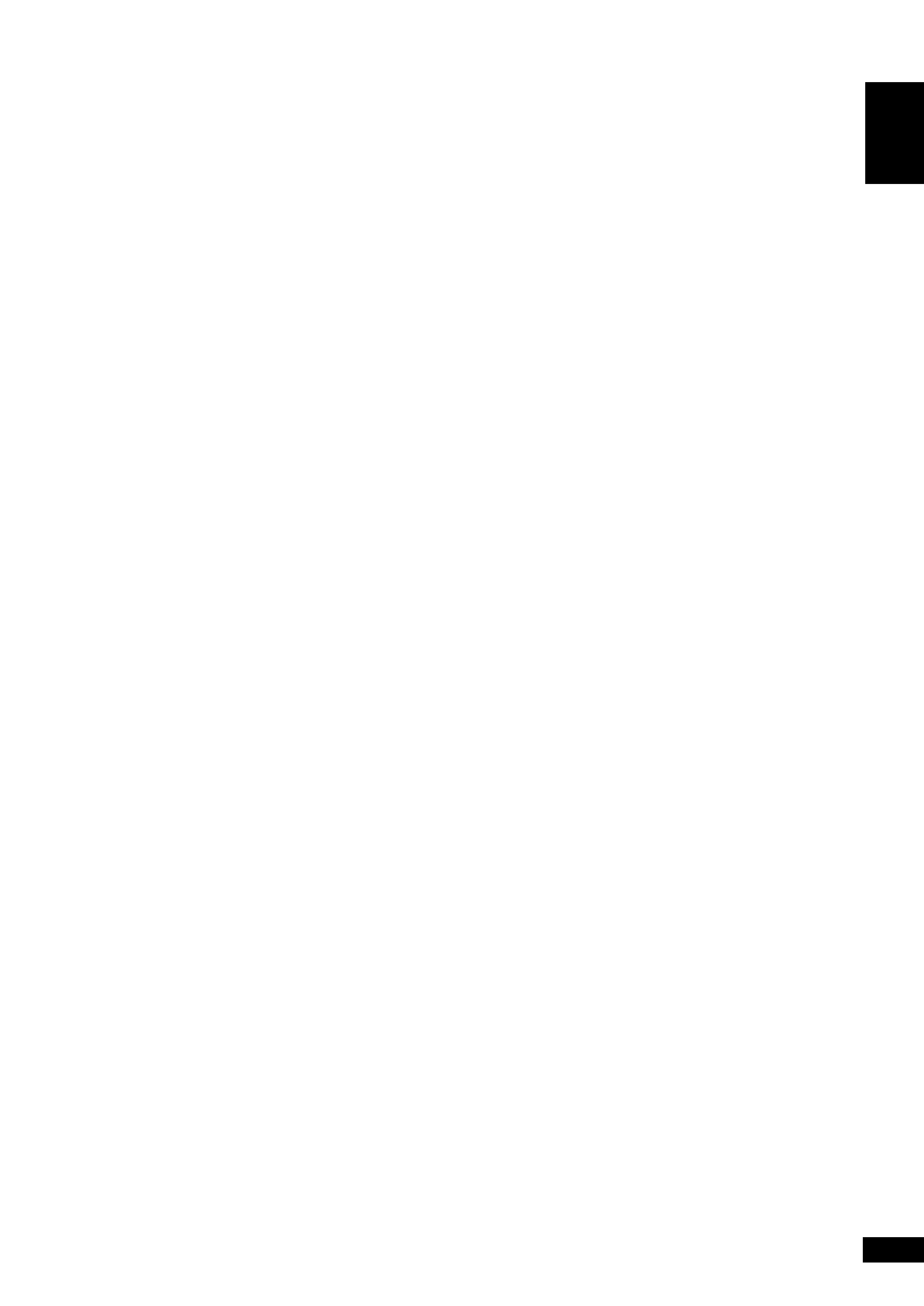
5
English
Contents
1
Before You Start
Feature of the PDR-609 CD recorder ...................................... 6
Checking what's in the box ..................................................... 6
Using this manual ................................................................... 6
Hints on installation ............................................................... 6
Putting the batteries in the remote control ............................ 7
Avoiding condensation problems ....................................... 7
Care and maintenance ............................................................ 7
Cleaning external surfaces ................................................. 7
Moving the unit .................................................................. 7
Storing optical cable .......................................................... 7
Handling discs .................................................................... 7
Storing discs ....................................................................... 8
Discs to avoid ...................................................................... 8
CD lens cleaner ................................................................... 8
About CD, CD-R and CD-RW discs .......................................... 8
Playback-only CDs ............................................................. 8
CD-Recordable discs ........................................................... 8
CD-Rewritable discs ............................................................ 8
Consumer-use discs ............................................................ 8
Recording and finalizing discs .......................................... 9
Recording copyright material ............................................ 9
2
Connecting Up
Connecting up for digital playback & recording .................. 10
About optical and coaxial jacks ....................................... 10
Using the digital inputs .................................................... 10
Using the digital outputs .................................................. 10
CD text compatible components ...................................... 10
Connecting up for analog playback & recording ................. 11
Connecting other Pioneer
Î components .................... 11
3
Controls and Displays
Front panel ............................................................................ 12
Remote control ...................................................................... 13
Display ................................................................................... 14
4
Getting Started
Switching on for the first time .............................................. 15
Selecting tracks directly ......................................................... 16
Using the menu features ....................................................... 16
Showing CD text information ............................................... 16
Showing disc information ..................................................... 17
Introduction to CD recording ................................................ 17
Digital recording restrictions ........................................... 17
Recording modes .............................................................. 18
Miscellaneous information .............................................. 18
Digital recording from DAT .............................................. 18
Digital signal interruptions .............................................. 18
Power interruptions .......................................................... 18
Recording one track from a source ...................................... 19
Recording all tracks from a source ....................................... 20
Automatically recording and finalizing a disc ..................... 21
Manual recording .................................................................. 22
Setting the digital recording level ......................................... 23
Setting the analog recording level ........................................ 24
Setting the balance ................................................................ 25
Finalizing a disc .................................................................... 26
5
More Playback Features
Programming the track order ............................................... 27
Clearing the playlist ......................................................... 27
Clearing a track from the playlist .................................... 27
Checking what's in the playlist ........................................ 27
Replacing a track in the playlist ...................................... 27
Playing tracks at random ...................................................... 28
Repeating tracks .................................................................... 28
Fading in and fading out ...................................................... 28
Playing a disc with skip IDs .................................................. 28
Skipping unwanted tracks ..................................................... 29
Setting skip IDs ................................................................. 29
Clearing skip IDs .............................................................. 29
6
More Recording Features
Using CD text ......................................................................... 30
Editing CD text ................................................................. 31
Copying track names to other tracks .................................... 32
Automatically numbering tracks .......................................... 33
Manually numbering tracks ................................................. 33
Starting tracks in time increments ....................................... 34
Recording fade ins and fade outs .......................................... 34
Setting the fade length .......................................................... 34
Recording a fade in ............................................................... 34
Recording a fade out ............................................................. 34
Recording blank sections ...................................................... 35
Checking what's at the end of a disc .................................... 35
Monitoring a source .............................................................. 36
Checking for digital copy protection ..................................... 36
Erasing a CD-RW disc ........................................................... 37
When a non-finalized disc is loaded ................................ 37
When a finalized disc is loaded ........................................ 38
Reinitializing a disc ......................................................... 38
7
Additional Information
Understanding display messages .......................................... 39
Troubleshooting .................................................................... 40
Display messages relating to playback ............................ 40
Display messages relating to recording ........................... 41
Specifications ......................................................................... 43
En
